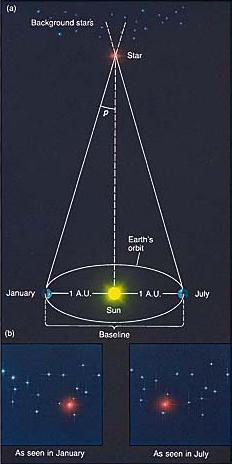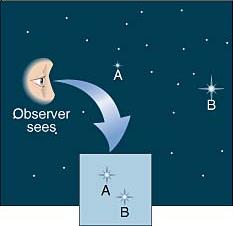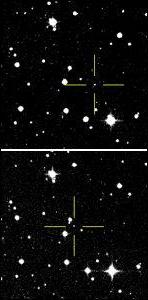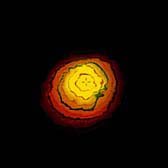|
Stars: General Properties
What Are They, and How
Far Are They?
- History: Around 1600, Thomas
Digges suggested that stars are distributed in 3D space, and
Giordano Bruno that they are like distant suns, but only in the
1800s were astronomers finally able to see the first stellar parallax
and spectra.
- What we now know: A
star is a body that (at least for some time in its life) generates
light and heat by nuclear reactions that fuse hydrogen into helium,
under conditions of enormous temperature and density. Our knowledge
of the Sun can
help us understand other stars.
- Parallax: Remember its importance
for the issue of whether the Earth moves; Using the diameter
of Earth's orbit as baseline, it now works for stars out to a
few hundred ly, with angles that are always less than 1"!
- New distance unit: 1 parsec
(pc) = 3.3 ly [= 206,000 AU = 33 trillion km], the distance at
which the parallax of an object would be 1"; For other objects,
distance (pc) = 1 / parallax (arcsec).
- Nearest stars: Proxima Centauri [p
= 0.77"], d = 1.3 pc = 4.3 ly; Barnard's star [p
= 0.54", d = 1.8 pc]; There are about 300 within
30 ly, mostly small and dim (no O and B
stars, a few A and F stars,
a few dozen sunlike G stars and K dwarfs, a whopping
236 cool, orange-red M dwarfs like Proxima Centauri, some
white dwarfs and L and T dwarfs – but there
could be many more, and newly discovered ones were reported
even in 2006), a million within 1000 ly (with even a modest amateur
telescope, millions of stars can be seen).
|
 |





![]()